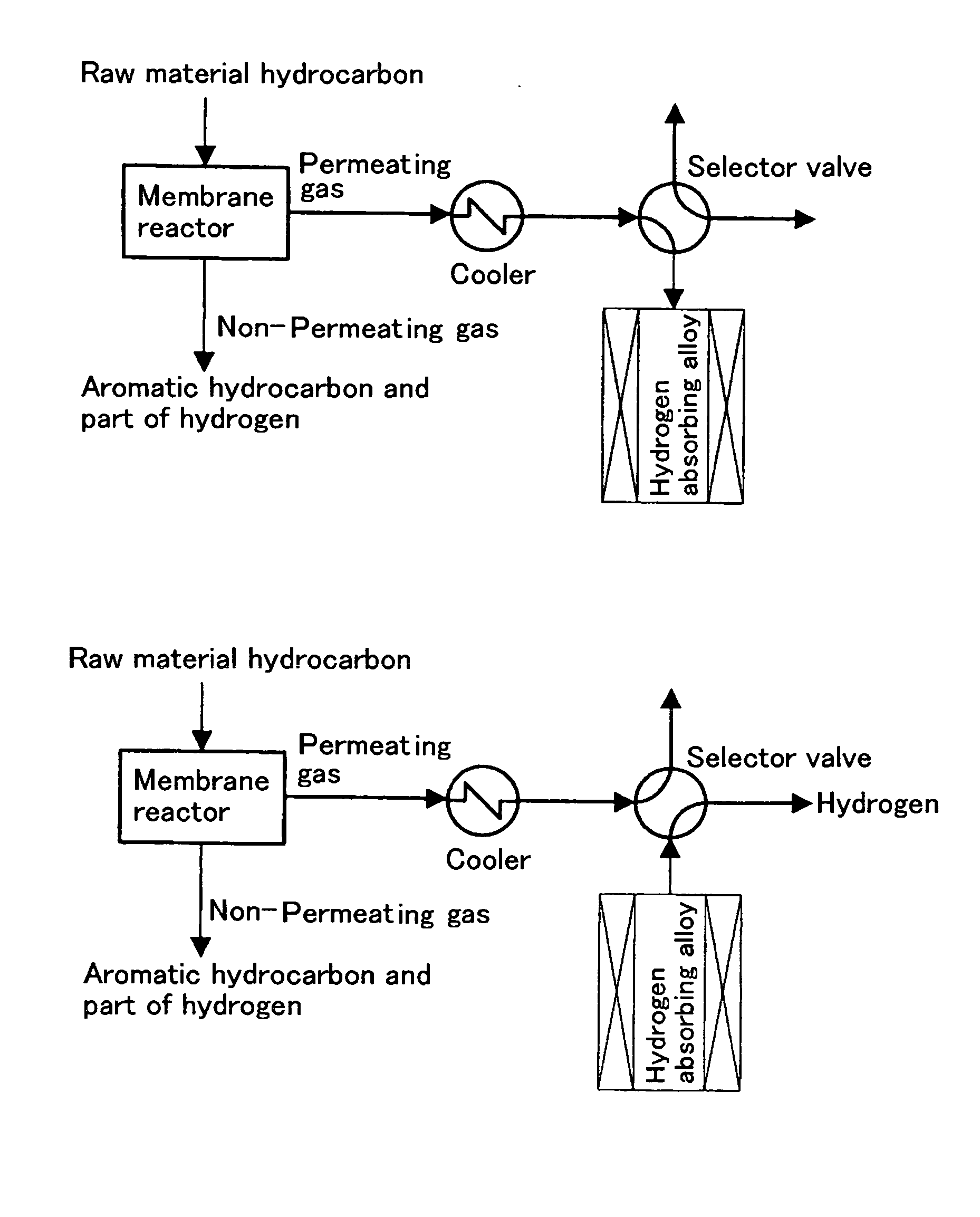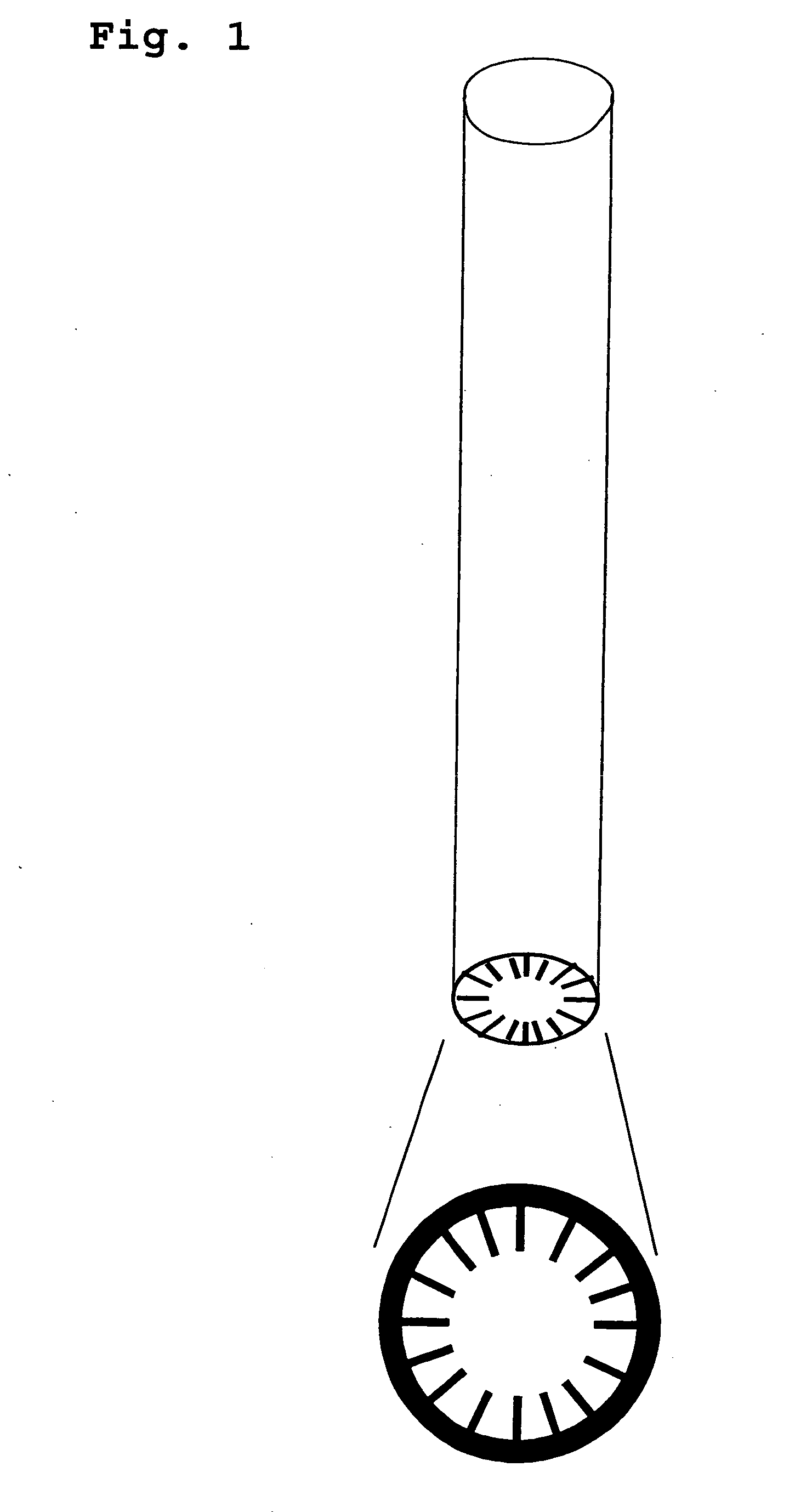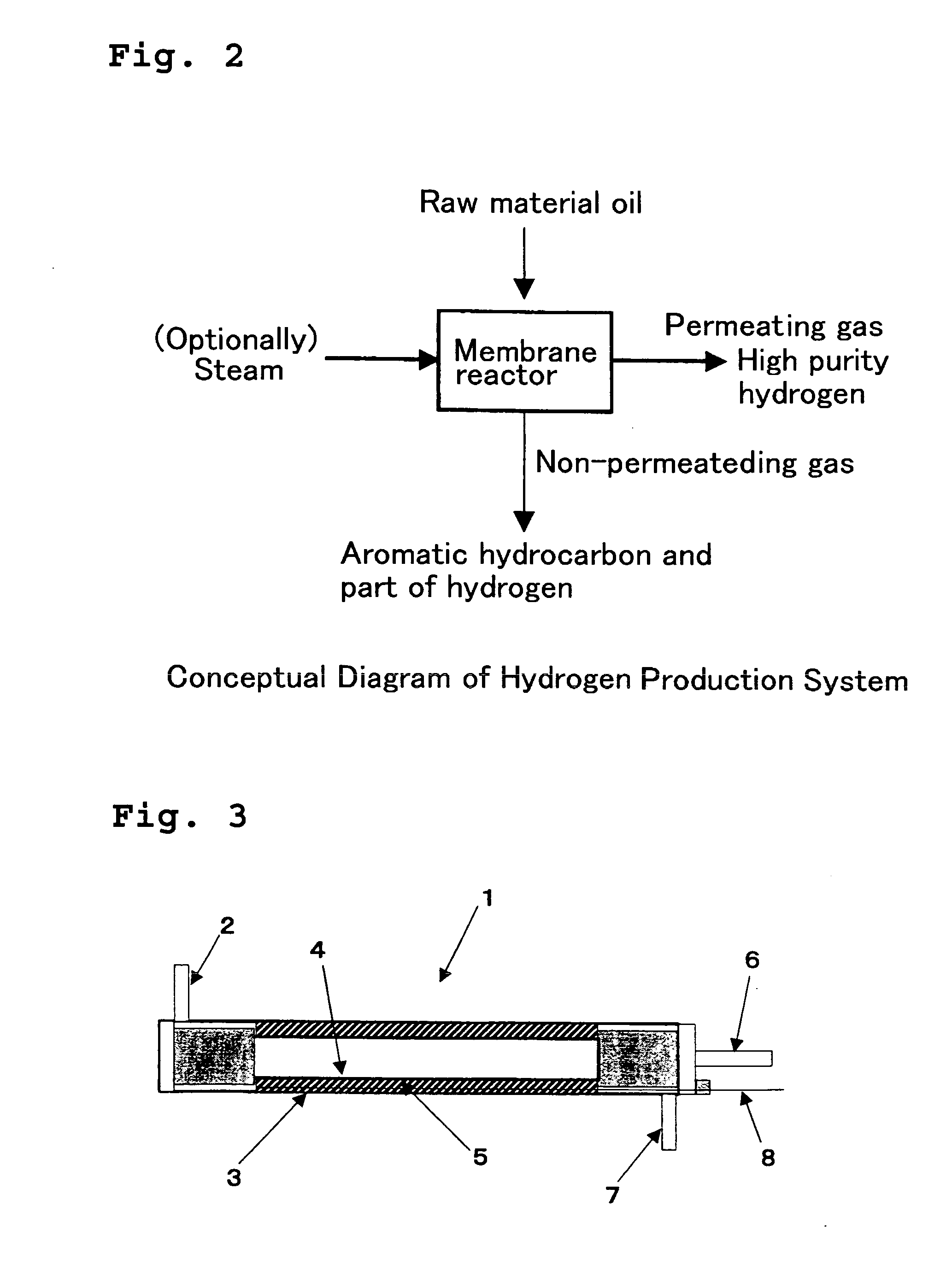Method for Producing Hydrogen and System Therefor
a hydrogen and hydrogen technology, applied in the direction of catalyst activation/preparation, metal/metal-oxide/metal-hydroxide catalyst, etc., can solve the problems of complex process, high temperature of reaction, and important hydrogen storage and transportation system, so as to reduce the pressure on the permeating side, the effect of efficient production
- Summary
- Abstract
- Description
- Claims
- Application Information
AI Technical Summary
Benefits of technology
Problems solved by technology
Method used
Image
Examples
example 3
[0127]As the catalyst 5, 110 cc of the catalyst A was filled in the clearance between the reaction tube 3 with an inside diameter of 24 mm and a length of 300 mm and the hydrogen separating membrane (hydrogen permeating membrane 4) in the membrane reactor schematically shown in FIG. 3, methylcyclohexane was introduced thereto as raw material gas, and dehydrogenation reaction was carried out in a condition with reaction pressure 0.2, 0.4, 0.6, 0.8 MPa (absolute pressure), permeated gas-side pressure 0.1 MPa (absolute pressure), reaction temperature (catalyst layer outlet temperature) 300, 270, 240° C., and LHSV 0.5 h−1. The result using the separating membrane B as the hydrogen separating membrane (hydrogen permeating membrane 4) is shown in Table 2.
example 4
[0128]Hydrogen was produced in the same manner as Example 3, except setting the catalyst B as the reaction tube in the membrane reactor instead of the catalyst A. The result is shown in Table 3.
example 5
[0129]Hydrogen was produced in the same manner as Example 4, except introducing steam to the permeating side of the hydrogen separating membrane and performing the reaction with a permeating-side hydrogen partial pressure of 0.05 MPa. The result is shown in Table 4.
PUM
| Property | Measurement | Unit |
|---|---|---|
| Percent by mass | aaaaa | aaaaa |
| Pressure | aaaaa | aaaaa |
| Mass | aaaaa | aaaaa |
Abstract
Description
Claims
Application Information
 Login to View More
Login to View More - R&D
- Intellectual Property
- Life Sciences
- Materials
- Tech Scout
- Unparalleled Data Quality
- Higher Quality Content
- 60% Fewer Hallucinations
Browse by: Latest US Patents, China's latest patents, Technical Efficacy Thesaurus, Application Domain, Technology Topic, Popular Technical Reports.
© 2025 PatSnap. All rights reserved.Legal|Privacy policy|Modern Slavery Act Transparency Statement|Sitemap|About US| Contact US: help@patsnap.com



